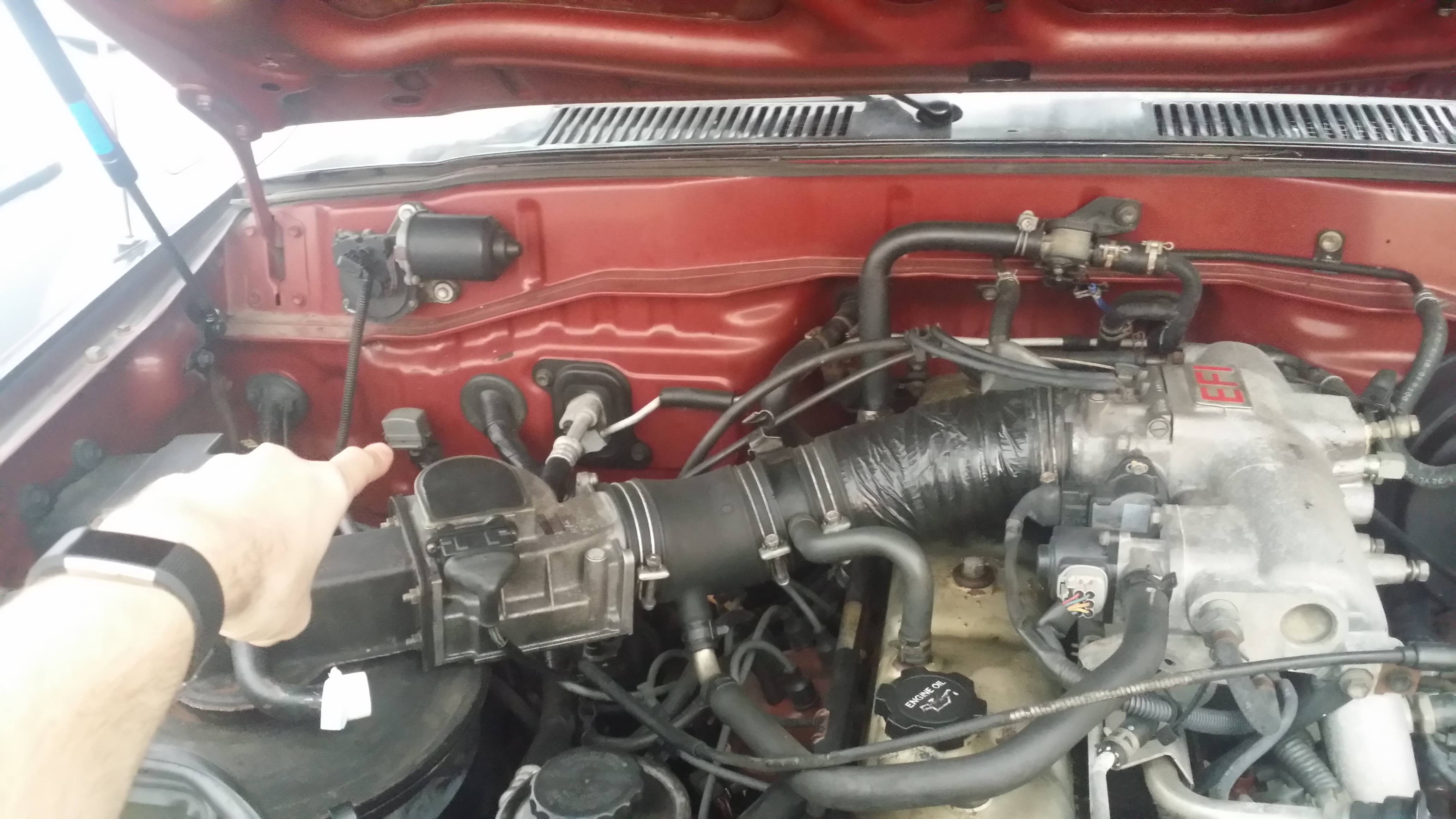Navigating the diagnostic systems of older vehicles can sometimes feel like unraveling a mystery. If you’re searching for the OBD2 port on your 1991 Toyota Land Cruiser, you might be in for a bit of a surprise. The 1991 Land Cruiser, a robust and reliable vehicle, actually predates the widespread adoption of OBD2 (On-Board Diagnostics II) systems. So, the short answer is: your 1991 Land Cruiser does not have an OBD2 port.
Instead of the standardized OBD2 port you might expect in modern vehicles, the 1991 Land Cruiser utilizes an earlier diagnostic system, often referred to as OBD1. This system uses a different type of connector and diagnostic procedures.
Understanding the Diagnostic Connector on Your 1991 Land Cruiser
While you won’t find an OBD2 port, your 1991 Land Cruiser does have a diagnostic connector that serves a similar purpose – allowing you to interface with the vehicle’s computer for troubleshooting. This connector is typically a small, gray box located in the engine bay.
Locating the Diagnostic Connector:
To find the diagnostic connector on your 1991 Land Cruiser:
- Open the hood: Ensure the engine is off and the vehicle is safely parked.
- Locate the engine bay: Stand facing the engine compartment from the front of the vehicle.
- Look at the back left corner: Direct your attention to the rear corner of the engine bay on the driver’s side.
- Identify a small gray box: You should be looking for a small, gray diagnostic connector box. It might be tucked away and possibly obscured by wiring harnesses, as one user in a forum noted it was “lost under a bunch of wires.”
Once you’ve located this connector, you’ve found the gateway to accessing your 1991 Land Cruiser’s diagnostic information.
 Close-up view of the diagnostic connector box located in the engine bay of a Toyota Land Cruiser.
Close-up view of the diagnostic connector box located in the engine bay of a Toyota Land Cruiser.
Diagnosing Your 1991 Land Cruiser: Beyond OBD2 Scanners
Since your 1991 Land Cruiser doesn’t have an OBD2 port, you can’t use standard OBD2 scanners to retrieve diagnostic trouble codes (DTCs). Instead, diagnosing issues on this model requires a different approach, one that harkens back to simpler, yet effective methods.
OBD1 Diagnostic Methods:
For the 1991 Land Cruiser’s OBD1 system, common diagnostic techniques include:
- Reading Blink Codes: This method involves using a jumper wire, often a simple paperclip, to bridge specific terminals in the diagnostic connector. By observing the blinking patterns of the Check Engine Light (CEL) on your dashboard, you can decipher diagnostic trouble codes. Each blink pattern corresponds to a specific fault code.
- Voltage Measurements with a Multimeter: More in-depth diagnostics might require using a multimeter to measure voltages and resistances at different pins within the diagnostic connector and related sensors. This allows for testing the electrical circuits and sensor functionality directly.
Specialized OBD1 Scan Tools:
While basic OBD1 diagnostics can be performed with a paperclip and multimeter, there are specialized OBD1 scan tools available. However, as mentioned in the original forum discussion, these can be expensive and may not offer significantly more functionality than the manual methods for the 1991 Land Cruiser’s system. The general consensus is that for this era of Toyota EFI systems, simpler tools are often sufficient.
Why Understanding Your 1991 Land Cruiser’s Diagnostics Matters
Understanding that your 1991 Land Cruiser uses an OBD1 system and knowing how to access its diagnostic information is crucial for several reasons:
- DIY Troubleshooting: It empowers you to perform basic diagnostics yourself, potentially saving time and money on professional mechanic visits for simple issues.
- Informed Repairs: By retrieving and understanding diagnostic codes, you can have a more informed conversation with your mechanic, ensuring accurate and efficient repairs.
- Maintaining Your Classic: For owners of classic vehicles like the 1991 Land Cruiser, understanding the nuances of its systems is part of the ownership experience.
In conclusion, while your 1991 Land Cruiser doesn’t feature the OBD2 port common in modern cars, it does have a diagnostic connector that allows you to tap into its engine management system. By understanding its OBD1 nature and familiarizing yourself with basic diagnostic techniques, you can keep your classic Land Cruiser running reliably for years to come.